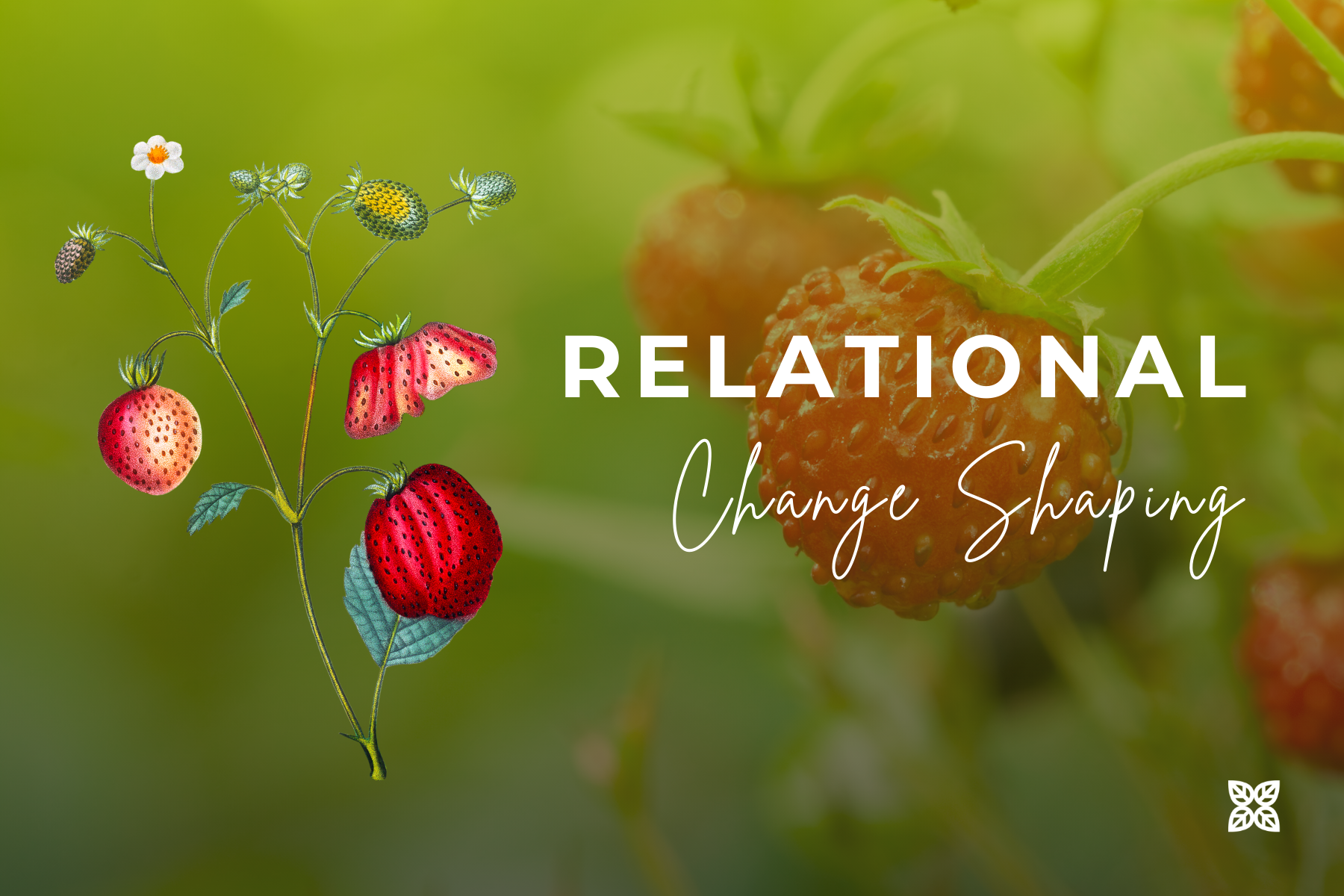This interlude on change making and coalition building is excerpted from Feeding Each Other: Shaping Change in Food Systems through Relationship. This book grew out of and is intertwined with the Change Shaping Certificate courses through EcoGather and with much of the work we do. We see change as a paradigm shift – a new way of thinking and seeing the world that breaks down the old systems and builds up more relational, more humane, and more collapse-responsive ways of being. Good ideas are not enough. To truly make an impact, we need to find people and build communities and coalitions – but how? That need to create connection and build bridges is THE work of change shaping. It is the heart of finding, making, and inhabiting a world in which we share care and build alternate futures. The world is full of great plans, rich theory, and even intense conversation. Turning those into fruitful connection and relationship is what we all need to live into. This excerpt is the first, most broad, way we make concrete coalitional and relational change processes. If this is interesting, the Change Shaping Certificate is a deeper dive into the work.
First and consistently, you point out the anomalies and failures of the old paradigm. We did that in Chapter Two, mobilizing statistics that back up what you already know from your own experience – the food system is not working well for enough people, for the land, and for other living beings. We need to admit to ourselves and each other that the system, which is a combination of broken and brutalizing, has already become unmanageable for some people. At the rate we are going, it will be unmanageable for all of us w ay too soon.
Second, you operate audaciously from the new paradigm. We support grounded hope. We would not be writing this book if we did not genuinely believe that change is possible when we improve the quality of relationships throughout the food system. So, we start doing it now, and out loud, and with joy and song. We want people to hear what we are doing and feel inspired to sing along, adding their own parts and harmonies.
Third, you support people who embrace the new paradigm to rise into places of public visibility and power. There is a power structure. Though we say we need to work around it, we also need to bring it up to speed. The philosopher Hannah Arendt says that we can never depend on the power structure to start the changes we need, but we can bring them along and put people in power to support us.
Fourth, you prioritize putting your attention on those who are receptive. When we talk about change there is a curve. There are early adopters – the first brave souls to groove to this music. (You might be among them if you are reading this book.) Then, there are early majority folks who see what the early adopters are doing, like what they see, and step onto the dance floor.Finally, a crowd of people will begin to pick up what others are laying down – to understand the change. All of those people are open to the thrumming of this new beat and start to get down with it. But not everyone is a joiner. There will be a percentage of people who, for all their own reasons, will never listen, or will actively disregard what you are saying. So, never mind the party poopers or crashers – the reactionaries and zealous opponents. Build coalitions with “active change agents and with the vast middle ground of people who are open-minded.” These useful general guidelines have informed this book andour work in the food system – and we’ve needed to pair them with more details about how to specifically make shifts toward relationality.

